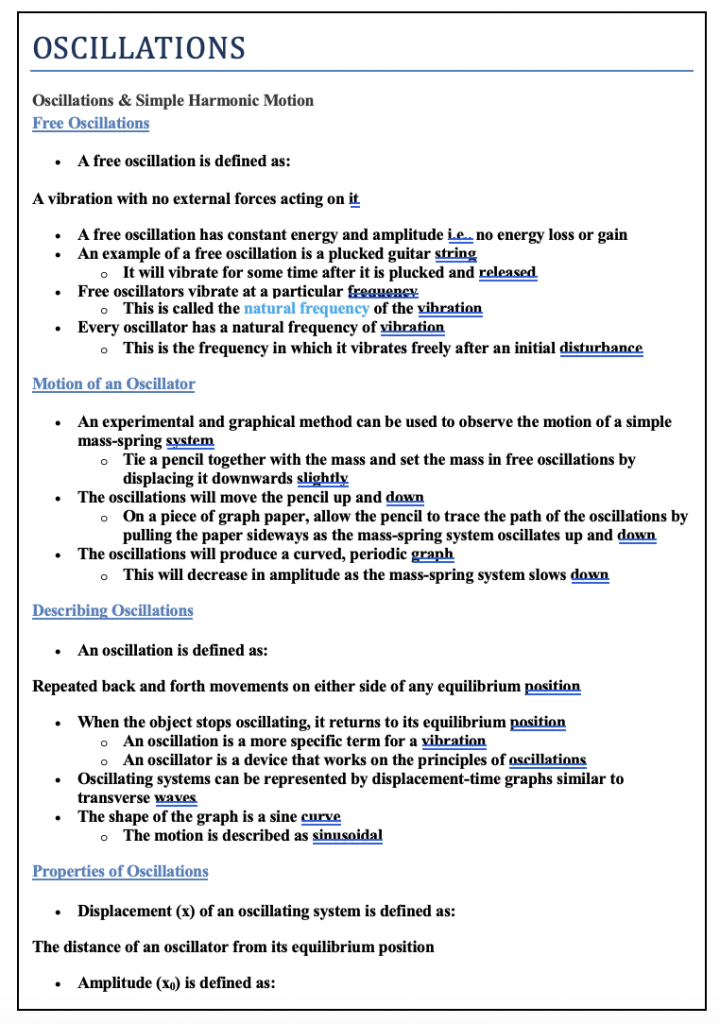Physics Oscillations Summary (Grade A)
Summary:
Oscillations refer to the repeated back-and-forth movements of an object around an equilibrium point. In the context of free oscillations, no external forces are acting, meaning systems like a plucked guitar string vibrate at constant energy and amplitude, reaching their natural frequency. The motion of oscillators can be visualized using a mass-spring system, producing a periodic graph demonstrating the system’s oscillations. This graph is sinusoidal, and its properties, such as displacement, amplitude, and angular frequency, help describe the oscillator’s behaviour. Simple Harmonic Motion (SHM) is a subset of oscillations where the acceleration is proportional but opposite to displacement. Specific equations govern an object’s acceleration, displacement, and speed in SHM and can be visualized on graphs resembling sine and cosine curves. For those studying these phenomena, it’s crucial to remember that while oscillations share properties with transverse waves, oscillators don’t have wavelengths. Also, when working with trigonometric functions in this context, ensuring your calculator is set to radian mode is essential.
Excerpt:
Physics Oscillations Summary
OSCILLATIONS
Oscillations & Simple Harmonic Motion
Free Oscillations
- A free oscillation is defined as:
A vibration with no external forces acting on it
- A free oscillation has constant energy and amplitude, i.e. no energy loss or gain
- An example of a free oscillation is a plucked guitar string
- It will vibrate for some time after it is plucked and released
- Free oscillators vibrate at a particular frequency
- This is called the natural frequency of the vibration
- Every oscillator has a natural frequency of vibration
- This is the frequency at which it vibrates freely after an initial disturbance
Motion of an Oscillator
- An experimental and graphical method can be used to observe the motion of a simple mass-spring system.
- Tie a pencil with the mass and set it in free oscillations by displacing it downwards slightly.
- The oscillations will move the pencil up and down.
- On a piece of graph paper, allow the pencil to trace the path of the oscillations by pulling the paper sideways as the mass-spring system oscillates up and down.
- The oscillations will produce a curved, periodic graph.
- This will decrease in amplitude as the mass-spring system slows down.


Reviews